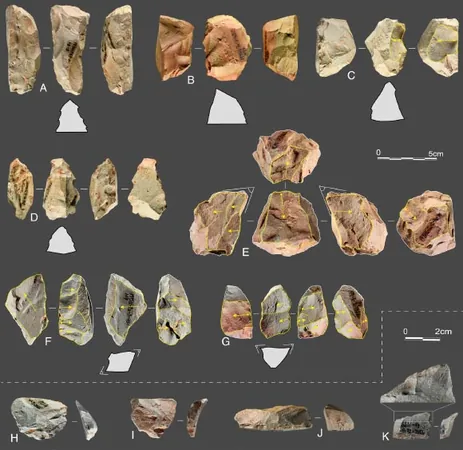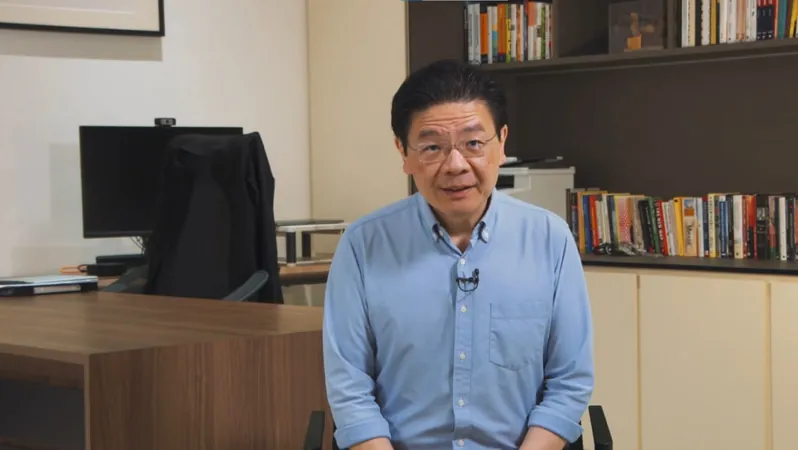
Revolutionary Stone Tool Discovery in China Rewrites the Story of Human Development in East Asia
2025-04-01
Author: Nur
Groundbreaking Discovery at Longtan Archaeological Site
A groundbreaking discovery at the Longtan archaeological site in southwest China has sent shockwaves through the archaeological community. Researchers unearthed a complex array of stone tools, dating back 50,000 to 60,000 years, that fundamentally challenges the long-held belief that East Asia experienced a stagnant evolution during the Middle Paleolithic period.
Challenging Traditional Beliefs
Traditionally, the Middle Paleolithic, spanning from approximately 300,000 to 40,000 years ago, has been recognized as a formative era for human evolution, primarily in Africa and Europe. While Europe was buzzing with the evolution of Neanderthals and Denisovans, it was assumed that technological advancements in East Asia were minimal and routine.
Significant Findings by Professor Bo Li and Team
Professor Bo Li from the University of Wollongong led the research team that made this significant discovery. "Our findings defy the conventional narrative that Middle Paleolithic tools in China were simplistic and static," Professor Li remarked.
The Quina Technological System Uncovered
The team uncovered a complete Quina technological system, characterized by unique cores that allowed for the production of large, thick flakes. These were then expertly fashioned into scrapers that exhibit remarkable wear patterns, indicating they were used for a diverse array of tasks—ranging from processing animal bones and hides to working wood and plant materials.
Innovations in East Asia
The Quina tool-making strategy, which originated in Europe between 300,000 and 40,000 years ago, had not been documented in East Asia until now. This system is marked by its steep, scaled retouch on thick flakes designed for durability, frequently associated with Neanderthal craftsmanship.
Adaptation to Climatic Challenges
The findings on the Quina scrapers suggest that they were not just utilized for basic survival needs, but that they played a vital role in adapting to the varying climatic and environmental challenges of the region, including expansive forest-grassland landscapes during the cool and dry periods of Marine Isotopic Stage 4, about 57,000 to 71,000 years ago.
Broader Implications of the Discovery
Professor Li emphasized the broader implications of this discovery: "The evidence from Longtan significantly expands our understanding of hominin species and the technological innovations they used. It suggests that these early humans were adaptable and had a greater geographic range than previously acknowledged."
Reevaluation of Human Migration Patterns
The implications of this research are profound, necessitating a reevaluation of human migration patterns and technological development in East Asia prior to the emergence of early modern humans approximately 45,000 years ago.
Exciting Future Research Avenues
"This opens up exciting new avenues for research that could fundamentally alter what we know about the prehistory of East Asia," Professor Li concluded.
Publication and Future Discoveries
The findings, which could reshape our understanding of human development in this region, have been published this week in the Proceedings of the National Academy of Sciences, highlighting the potential for further discoveries that may yet redefine the narrative of human evolution.
Conclusion
Stay tuned as new revelations continue to emerge from the Longtan site, a place that might just hold the keys to humanity's ancient past!





 Brasil (PT)
Brasil (PT)
 Canada (EN)
Canada (EN)
 Chile (ES)
Chile (ES)
 Česko (CS)
Česko (CS)
 대한민국 (KO)
대한민국 (KO)
 España (ES)
España (ES)
 France (FR)
France (FR)
 Hong Kong (EN)
Hong Kong (EN)
 Italia (IT)
Italia (IT)
 日本 (JA)
日本 (JA)
 Magyarország (HU)
Magyarország (HU)
 Norge (NO)
Norge (NO)
 Polska (PL)
Polska (PL)
 Schweiz (DE)
Schweiz (DE)
 Singapore (EN)
Singapore (EN)
 Sverige (SV)
Sverige (SV)
 Suomi (FI)
Suomi (FI)
 Türkiye (TR)
Türkiye (TR)
 الإمارات العربية المتحدة (AR)
الإمارات العربية المتحدة (AR)